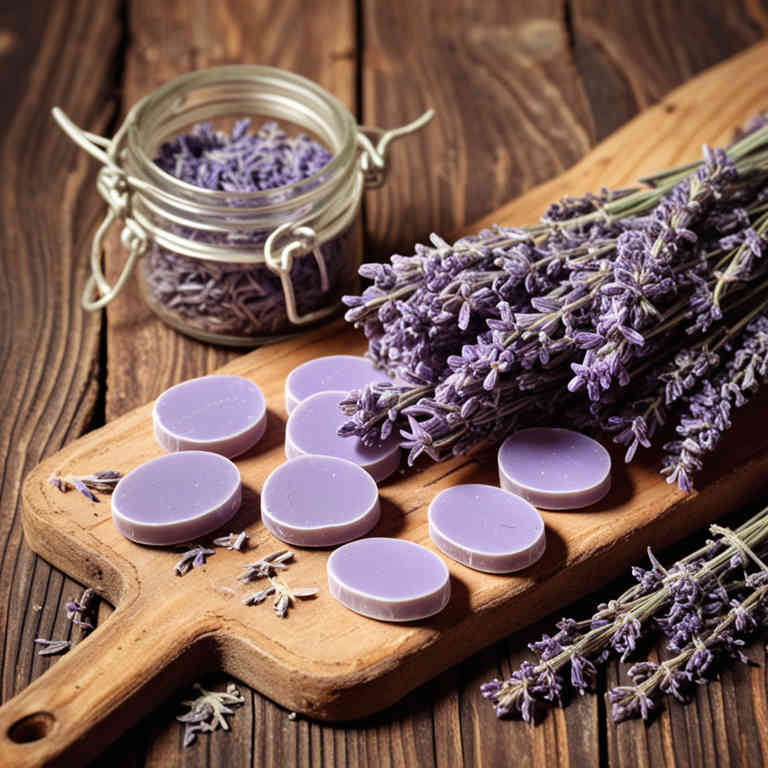Lavandula angustifolia lozenge for medicinal use

Lavandula angustifolia lozenge is a herbal preparation made from the dried flowers of lavender, commonly used in herbal medicine.
It is typically formulated into a lozenge or throat lozenge for easy consumption. This preparation is valued for its soothing properties and is often used to alleviate symptoms of sore throat, cough, and inflammation. In herbalism, it is also believed to have calming effects on the nervous system.
Lavandula angustifolia lozenge is a popular remedy for respiratory and emotional wellness.
Uses
Lavandula angustifolia lozenge has been used to soothe sore throats and alleviate symptoms of respiratory discomfort for centuries.
Historically, lavender has been valued in ancient civilizations such as Egypt, Greece, and Rome for its calming and healing properties, often used in aromatherapy and medicinal preparations. In traditional herbal medicine, lavender lozenges were crafted to provide relief from coughs, colds, and inflammation due to their antiseptic and anti-inflammatory properties. Modern applications continue to recognize these benefits, with lavender lozenges commonly found in over-the-counter remedies for sore throats and as a natural alternative to conventional treatments.
Today, they are also appreciated for their pleasant aroma and stress-reducing effects.
Benefits
Lavandula angustifolia lozenge has health benefits such as soothing sore throats, reducing inflammation, and promoting relaxation.
The calming properties of lavender help alleviate stress and improve sleep quality. These lozenges are often used to relieve symptoms of colds and respiratory infections due to their antimicrobial and antiseptic qualities. They may also support mental well-being by reducing anxiety and enhancing mood.
Overall, Lavandula angustifolia lozenges offer a natural remedy for a variety of minor health concerns.
Constituents
Lavandula angustifolia lozenge active constituents include linalool, lavandulol, and lavandic acid, along with other terpenoids and phenolic compounds.
These components contribute to the lozenge's soothing and calming effects. Linalool is known for its antimicrobial and anti-inflammatory properties, which can help reduce oral discomfort. Lavandic acid may support respiratory health by easing congestion and promoting clear breathing.
Overall, these active ingredients make Lavandula angustifolia lozenges beneficial for relieving sore throats, coughs, and minor respiratory irritations.
Preparation
To make Lavandula angustifolia lozenge, start by harvesting fresh lavender flowers or using dried ones, then gently crush them to release their essential oils.
Next, combine the lavender with a sweetener such as honey or sugar and a small amount of water in a saucepan, and simmer over low heat until the mixture thickens. Allow the mixture to cool slightly, then pour it into a mold or tray lined with parchment paper.
Finally, let the mixture set in the refrigerator for several hours or until firm, then cut into individual lozenges and store in an airtight container.
Side Effects
Lavandula angustifolia lozenge may lead to mild side effects such as nausea, drowsiness, or allergic reactions in some individuals.
These lozenges are commonly used for their calming and soothing properties, particularly for sore throats and stress relief. However, excessive use can cause gastrointestinal discomfort or interact with certain medications. People with allergies to lavender or other components should avoid this preparation.
It is important to consult a healthcare provider before use, especially for those with pre-existing medical conditions or who are pregnant.